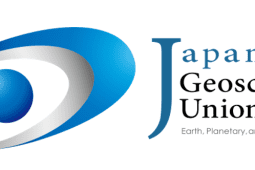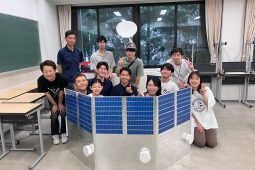PPARCセミナー (2022/10/07)

PPARCセミナー 2022/10/7
発表者: 木下凌太 (B4)
タイトル: Infrared observations of Io from Juno: review
アブスト:The Jovian InfraRed Auroral Mapper (JIRAM) on board the NASA Juno spacecraft is a dual-band imager and spectrometer, primarily designed to study the Jovian atmosphere and aurorae. In addition to its primary goal, JIRAM has been used to obtain images and spectra of the Galilean satellites, Jupiter’s largest moons, when the spacecraft attitude was favourable to achieve this goal. Here they present JIRAM’s first images and spectra of Io. These observations are used to characterize the location and possible morphology, and some temperatures, of Io’s volcanic thermal sources; the identification of SO2 and the possible identification of other materials. A new hot spot/volcano is identified close to the South Pole of Io, and others are seen in lower latitude regions, which were previously unmapped. Images of the same region taken 2 months apart also show variations of hot spot intensity, possibly due to new lava flows or to lava flow breakouts.
発表者: 茂野正紀 (B4)
タイトル: Altitude of pulsating arcs as inferred from tomographic measurements: review
アブスト:Data from three all‐sky cameras in Kiruna and Tjautjas (Sweden) were used to estimate the altitude of pulsating arc‐ like forms using optical tomography. The event under consideration occurred during the substorm recovery phase and comprised both periodic luminosity variation of the on/off type with repetition periods of 3–6 s (main pulsations) and faster scintillation (approximately 2 Hz) during the “on” phase of the main pulsations. It is found that (1) the altitudes of the pulsating auroral arcs decrease during “on” intervals from ~ 95 km to ~ 92 km and (2) for two closely spaced arcs, internal modulation took place only in the lowest arc. The results may be interpreted in the frame of the traditional mechanism assuming electron scattering via VLF‐wave/particle interaction in the equatorial magnetosphere, while the internal modulation may also be alternatively interpreted in the frame of the less‐often inferred mechanism of field‐aligned acceleration somewhere between the equatorial plane and ionosphere.
発表者: 大畑元 (B4)
タイトル: Three-dimensional structure of thermal waves in Venus’ mesosphere from ground-based observations: review
アブスト:High spectral resolution observations of Venus were obtained with the TEXES instrument at NASA’s Infrared Telescope Facility. These observations focus on a CO2 absorption feature at 791.4 cm-1 as the shape of this absorption feature can be used to retrieve the vertical temperature profile in Venus’ mesosphere. By scan-mapping the planet, they are able to build up three-dimensional temperature maps of Venus’ atmosphere, covering one Earth-facing hemisphere and an altitude range of 60–83 km. A temperature map from February 12, 2019 clearly shows the three-dimensional structure of a planetary-scale thermal wave. This wave pattern appears strongest in the mid-latitudes of Venus, has a zonal wavenumber of 2–4 and the wave fronts tilt eastward with altitude at an angle of 8–15 degrees per km. This is consistent with a thermal tide propagating upwards from Venus’ upper cloud decks. Ground-based observations provide the opportunity to study Venus’ temperature structure on an ongoing basis.
発表者: 桑山陽次 (B4)
タイトル: Ionospheric effects in VLBI measured with space-ground interferometer RadioAstron: review
アブスト:They report on slow phase variations of the response of the space-ground radio interferometer RadioAstron during observations of pulsar B0329+54. The phase variations are due to the ionosphere and clearly distinguishable from effects of interstellar scintillation. Observations were made in a frequency range of 316–332 MHz with the 110-m Green Bank Telescope and the 10-m RadioAstron telescope in 1-h sessions on 2012 November 26, 27, 28, and 29 with progressively increasing baseline projections of about 60, 90, 180, and 240 thousand kilometres. Quasi-periodic phase variations of interferometric scintles were detected in two observing sessions with characteristic time-scales of 12 and 10 min and amplitudes of up to 6.9 radians. They attribute the variations to the influence of medium-scale Travelling Ionospheric Disturbances. The measured amplitude corresponds to variations in vertical total electron content in ionosphere of about 0.1×10^16 m^-2. Such variations would noticeably constrain the coherent integration time in VLBI studies of compact radio sources at low frequencies.





